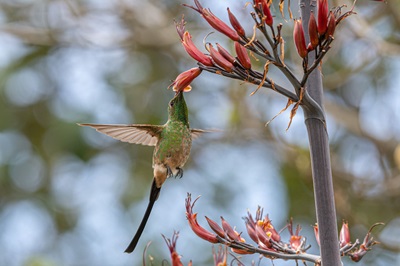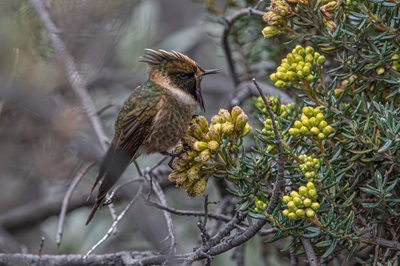
University of Queensland research has revealed that protecting smaller but more strategic parcels of land will result in better and more cost-effective biodiversity conservation outcomes globally.
The study, conducted by Dr Pablo Negret while at UQ’s Centre for Biodiversity and Conservation Science, has revealed a strategy that could halve the costs of preventing habitat loss.
“Currently, governments and NGOs mostly focus on geographic percentage-based biodiversity protection targets – for example, protecting 30 per cent of a country by 2030,” Dr Negret said.
“But, to get to that 30 per cent, governments will often just protect areas where it is easier and cheaper to do so.
“It’s always good for biodiversity to expand protected area coverage, given the global destruction of natural landscapes, but this type of expansion is often in areas under lower threat.
“Protecting these low-threat areas means your return on investment isn’t that great – you’re not making the biggest impact.
“Instead, we really need our new protected areas in locations where they prevent active, human-led threats – such as deforestation – where real habitat and species losses will otherwise continue.
“Purchasing these high-risk areas is much more cost effective.
“Each high-risk square kilometre generally costs more to protect, but as fewer of them are needed, the same conservation outcomes in terms of future habitat retained in the landscape can be achieved for less money.
“In the case study we examined, this method would require half as much protected area to achieve the same benefit in terms of prevention of future habitat loss.”

The study analysed the distribution of forest bird habitat in Colombia and how this would change if expansion of protected areas was mainly done in areas of high versus low deforestation risk.
While the study primarily focused on bird populations in Colombia, the research can be extrapolated to other nations, including Australia, looking to retain biodiversity cost-effectively.
“Many of Australia’s protected areas are in the drier inland, but threats from deforestation are concentrated in places like southern and central Queensland,” Dr Negret said.
“Protecting land in places like southern and central Queensland is more expensive, but it makes a much bigger difference to how much habitat we keep in our landscapes.”
UQ’s Professor Martine Maron said they were realistic about the challenges facing policymakers to adopt this strategy.
“Governments and NGOs face significant cultural and political interests that may resist protecting these areas,” Professor Maron said.
“Locations that need protecting are often those where there is lots of competition for how land is used.
“But, with so many species under threat across the globe, it’s critical that we don’t just expand our existing protected area network without making sure it makes a real difference to keeping habitat where species need it.”
The research is published in Global Change Biology.
Media: Dr Pablo Negret (Bern, Switzerland), pablo.negret@wyssacademy.org, +41 79 804 00 96; Professor Martine Maron (Brisbane, Australia), m.maron@uq.edu.au, +61 (0)417 110 537; UQ Faculty of Science Media, science.media@uq.edu.au, +61 (0)438 162 687.



